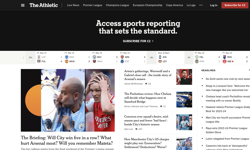It has, at first glance, been a good year for print publishing. Vogue brought out its largest ever edition, weighing in at over two kilos and boasting 840 pages; the Wall Street Journal was purchased for over $5 billion; and yet the future of print continues to be hotly debated. Indeed, print is in danger of becoming what the Financial Times used to diplomatically describe as an "unloved sector".
By contrast, excitement around digital content grows and grows. Over $10 billion was invested in 2007 on acquiring digital advertising companies, the principal drivers - and beneficiaries - of the rapid growth in online advertising.
This contrast in perspectives prompted Deloitte to meet with some of the publishing industry’s leading figures, to get their views and insight on what’s really happening, and what is likely to happen to the sector. This is due to be published in a report early in 2008 entitled Hold the Presses: It’s time to think beyond ink.
One point is clear among the chief executives and other respondents to whom we spoke: publishers and their customers are undergoing a critical, irreversible period of transition. Publishers have chosen to embrace the digital era, but with varying degrees of success and enthusiasm. There is still variance in perception of digital. Some regard it as a threat, others as an opportunity. Few know quite what they are going to do next.
Publishers need to decide how to differentiate content for new channels from print content without damaging their brand. And diversification is not limited to digital formats – for example, conference organisation or in-depth research offerings are potentially lucrative complements to core products. A portfolio-based approach, including all of these factors, may become of ever greater importance as margins for traditional, core offerings begin to wear thin.
Portfolio-based approach
The publishers we spoke to, in both consumer and business publishing, are actively seeking to diversify. They are acutely aware of the pressure on profit margins in advertising sales and subscriptions. The required response for most has been a portfolio-based approach to product development and management. Publishers now need to build umbrella media strategies that cover these disparate activities.
The internet is a tool that can help publishers better serve both their readers and their advertising clients, but many are struggling to implement a coherent strategy that allows them to realise this effectively. Media fragmentation has created new areas of opportunity and profit potential, but tying together content, commerce and communities is proving challenging for some organisations.
Brand remains an important tool to be used in the development of such strategies. For example, some publishers have long been aware that brand ownership allows them to organise and promote their own, highly profitable events, but now see this as an integral part of their overall offering to their consumers. In some cases, large, established annual industry events, including awards ceremonies, training, and seminars, have been created and have succeeded in delivering profits that have rivalled the print product that has sponsored them. In other cases, a successful industry event has defined the market itself for other services. Enterprising cross-product brand deployment has allowed these publishers to build profitable links with both readers and advertisers.
One of the main challenges publishers are facing is how they develop an effective, profitable internet strategy. Everyone has a website, but not all are using them effectively. Meeting the digital challenge is requiring a degree of formalisation of publishers’ web strategies that didn’t exist before. It has needed the allocation of specific resources, and a clearly outlined development process that will convey strong brands onto the internet, and bring the publisher closer to his readership by opening new channels of communication, and providing a new source of customer exposure for his advertisers.
Success in grasping this new media nettle, and making something of it, depends in part on the degree to which management and editorial staff are able to not only build profitable online solutions, but also to expand their business into new areas. Successful publishers will be able to link seamlessly their new business lines to both the original hardcopy and new products as part of the construction of a broader media strategy.
Managing such a broad-based product portfolio is not, however, straightforward. The challenge is to keep the portfolio sufficiently tied together to support the overall brand but also one in which each element has sufficient freedom to grow and compete with ‘best of breed competitors’. Given the intense and unique competitive pressures existing in the various product markets (print, digital, conference etc), it is likely that ultimately freedom and autonomy will win in the end, although many publishing organisations will need to get there over time.
It’s not just about the internet
Digital should enable a better understanding of the customer. Business media publications are in a strong position here as they can develop products that address the data or marketing requirements of their target base.
But staying on top of a more fluid client base requires publishing houses to implement far more robust internal data management structures that can track much higher volumes. This should be part of their integrated media management strategy. Simple breakdowns by location or demographics are being replaced by far more sophisticated data flows tracking reader preferences. Implementing the correct technologies to report effectively and concisely, is proving to be critical for publishers intent on developing cutting edge new media products. Not only that, but it provides them with a valuable data resource that can inform advertisers, or which advertisers will buy to evaluate themselves.
The internet is still throwing up new sources of competition. The proliferation of free content is making it progressively more difficult for publishers to create products that readers will still pay for. Without a physical product, it is harder to justify charging similar prices to hard copy without some kind of additional internet-only sweetener.
Brand and first-mover advantage have allowed established publishers to compete with new digital arrivals for the time being, but will it be enough to retain the loyalty of a younger generation of readers more comfortable with electronic media? The leading brands in print publishing in each sector will need to react to online innovation in order to remain attractive and maintain their market leadership. It is possible we may even see a process of established print publishers buying leading web portals to solve this conundrum.
The changing role of editorial
Editorial teams are also changing with the times. It has often been the chief executive within publishers that has been the first to realise the potential for new media, and it is they who have had to engage editorial teams in an effort to provide content that is as valuable for their web-users as for their print customers. They have sought to increase traffic and line up advertisers to support web-based projects. In most publishers, the legacy culture has been print. It has required much effort to persuade journalists to serve both online as well as print.
Publishers now see their editors as ambassadors for their brands. In some cases, they have become media personalities in their own right. The choice of editor is no longer being informed purely by his or her skills at commissioning and editing copy.
A dilemma facing editors and publishers is whether to create dedicated positions serving the website and its specific customers, or to require staff working on print titles to create additional content for the internet. This latter option can be difficult for periodicals that are already under-resourced in terms of editorial personnel. Adding a new product for journalists to contribute to on top of their print workload may not be well received.
In response, many firms have attempted a media-neutral approach to content. However, it is becoming increasingly obvious that electronic media requires its own style and structure. What might be suitable for print, may not work online, and vice versa.
Instituting a new media culture is taking time, but is starting to pay dividends. There is a case for using the web to deliver original content to readers that is not to be found within the pages of hard copy products. Publishers have also realised that the internet represents the best place to break news, and post content that is time sensitive in nature. Regular intra-day news updates, once the preserve of major newswires, is now something other editorial personnel have to grapple with too. But it has given them the opportunity to break stories in real time, and to compete within their own niches against much bigger news houses and newswires. A generation of journalists is being created that will be as comfortable posting online as writing for print.
Where to now?
Print is not dead. Nor is it in danger of extinction. But it has to adapt to face a more demanding environment that could change publishers into far more diverse and sophisticated organisations. The successful publishing organisation needs to add a new electronic layer that provides revenue and circulation opportunities that can both support their existing print publishing businesses, and create new revenue streams.
Managing this new opportunity has become a critical part of that equation. It has required new and refreshed technology. It has also required education to enable staff to make productive use of the new digital toolsets and also to help sales teams explain how web offerings feature within a company’s overall offering. Some of these new products and services could even be more lucrative than the original print products.
A gap is growing between companies that have made digital media and other complementary profit bases a priority in the last few years, and those that are stuck in a holding pattern while striving to produce a response to the new status quo. For the latter, it may well be a case of thinking beyond ink.
The printed story is still important, but it is now far from being the whole story.
FEATURE
All change please
The publishing sector is in a phase of irreversible transition, but some publishers are further down the road to multi-channel delivery than others, and are therefore better placed to compete with new rivals. Deloitte’s Mark Lee-Amies looks at the challenges facing print rooted publishers.










